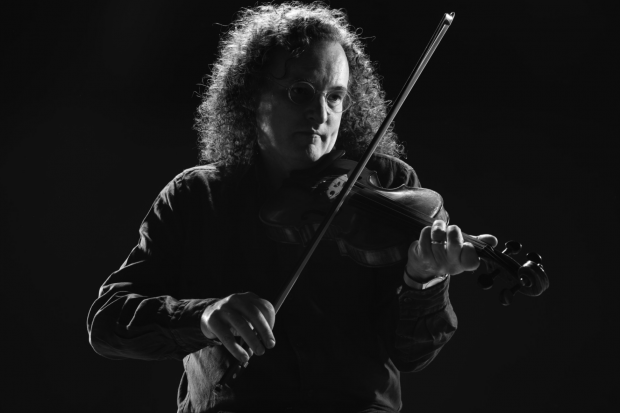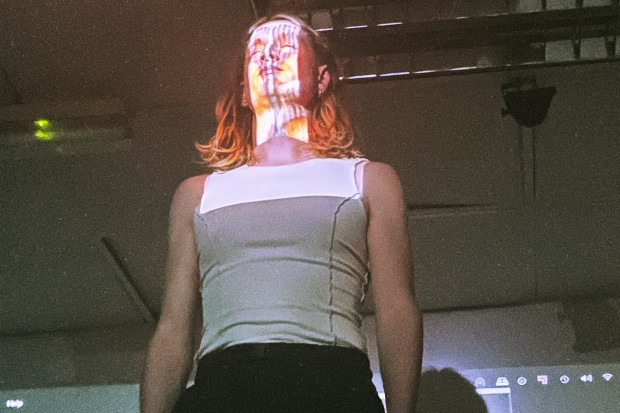
Denis Cahill
Every Note to Be Magical
When the great traditional guitarist Dennis Cahill died last June at the age of 68, many of his obituaries observed that he was the humblest of musicians. He played not to attract attention to himself, but to create a ground that supported his partners. One wonders how this player who so relished the background would have felt about being the subject of Dónal O’Connor’s 50-minute portrait film Litir ó Do Chara. Starting from his Kerry-born parents and their emigration to the US, this film charts his life from his musical beginnings as a jobbing guitarist on the Chicago bar and cabaret scene to his 35-year musical collaboration with fiddle player Martin Hayes and the groups they formed down the years. (Hayes’ tribute to Cahill, written on Facebook shortly after his death, lends the film its title.)
If Cahill would have been uncomfortable being at the centre of Litir ó Do Chara, he might be grateful that O’Connor made him a somewhat absent centre. The film includes almost no footage of Cahill talking whatsoever. We see plenty of photos of him from across the years, and are even shown, briefly, some of his art photography that struck me as sharing in the careful composition of his arrangements, but we only hear his voice once, when he jokingly asks his friend the accordionist Jimmy Keane, ‘What’m I doing here?’ We do not even hear that much of his playing. Instead, we mostly encounter him through the effect he had on those who loved him. The soundtrack of the film is dominated by tribute tunes and songs, played by musicians from Cormac Begley to Liz Carroll to Niamh Parsons (for whom he produced Heart’s Desire (2002)), as well as several members of The Gloaming, with whom he recorded four albums between 2014 and 2019. Most of the speech in the film is of his family, friends and colleagues trying to capture what sort of person he was – quiet, reserved, warm, endlessly curious, always with his guitar in his hands – through sweet anecdotes about how he was nervous around cows when first in the west of Ireland, or how excited he got about making cappuccinos.
Controlling the arc
It is fitting if, as I suspect, we did not get the half of Cahill through these remembrances. The impression I got was of a lovely but normal guy, not a world-class musician who had played for US presidents. But then, you couldn’t capture Cahill’s musical brilliance through description either. This brilliance lay in the subtlest places: in his precise jazz chord voicings, and even more than that in the perfect roundness and warmth with which he played those chords, in the way he could perfectly control the arc of his playing over the fifteen- or twenty-five-minute sets for which he and Hayes were renowned.
Indeed, and as many of those interviewed in Litir ó Do Chara affirmed, Cahill will be influential for a long time in traditional Irish guitar playing. His minimal, careful playing style is instantly recognisable. But Cahill did not spring from the womb playing like this. One of the most fascinating parts of Litir ó Do Chara is how we see a glimpse of Cahill’s early Chicago years, playing in all sorts of genres, from blues to jazz to American country to Irish folk. There are no surviving recordings from that time, but we learn that Hayes and Cahill’s first collaboration was the jazz fusion band Midnight Court. The film allows us to see some of Cahill’s playing in his first albums with Martin Hayes, The Lonesome Touch (1997) and the follow-up Live in Seattle (1999), as the tail end of his early musical approach. Cahill mostly plays with the minimalism that made his name, but he also has moments of superficial virtuosity that hark back to his earlier approach: taking the melody from Hayes or playing in unison with him. It would have been electric at the time (the audience on Live in Seattle certainly thinks so), but set against the restrained poise of his playing on The Blue Room (2017), where Hayes and himself are joined by Doug Wieselman and Liz Knowles, it seems showy and conventional, and underscores just how deliberate Cahill’s later style was.
Without inflection
His mature playing was remarkable. He often played without inflection or ornament: playing unarpeggiated chords or even repeated single notes and letting other musicians fill out the harmonies, often playing only the downbeats. But within these constraints he was a master of space and shade, no note ever too prominent or in the wrong octave. Even in a full mix, as when in The Gloaming he was filling a similar role to Thomas Bartlett’s piano, he was vital, softening Bartlett’s muscular chords. As Iarla Ó Lionáird put it in the film, Cahill wanted every note to be magical. I often think of the Italian painter Giorgio Morandi, who spent most of his life painting still lifes of the bottles and vases in his bedroom, in connection with Cahill; as with any great minimalist, Cahill’s restricted palette is not simple, but rather reveals a more subtle, deeper, complexity.
Litir ó Do Chara is not so singular as this. It was unbalanced in some ways, such as by playing up the Irish connections of a Chicago man who never actually lived in Ireland, and the film, as well as those who spoke in it, sometimes seemed at a loss about what to say beyond generalities and superficialities. But what else can you do when you’re grieving? You look through old photos and feel sad, thinking about time and what you’ve lost; you sing a song; you tell a story; you play a tune.
Litir ó Do Chara is directed and produced by Dónal O’Connor for Aniar TV and is available to view on www.tg4.ie.
Subscribe to our newsletter.
Published on 8 March 2023
James Camien McGuiggan studied music in Maynooth University and has a PhD in the philosophy of art from the University of Southampton. He is currently an independent scholar.

















